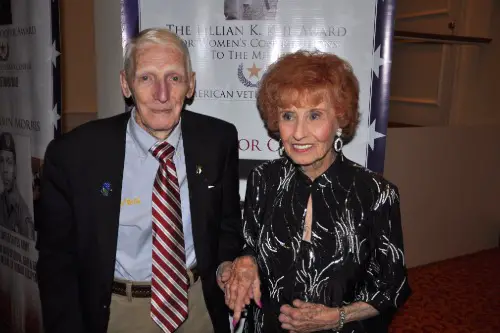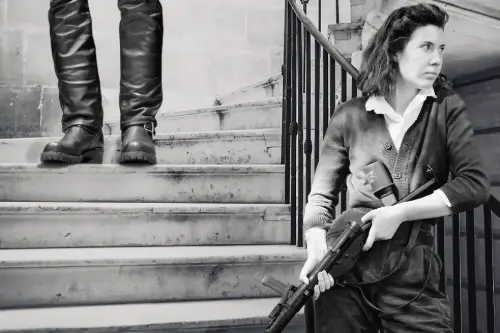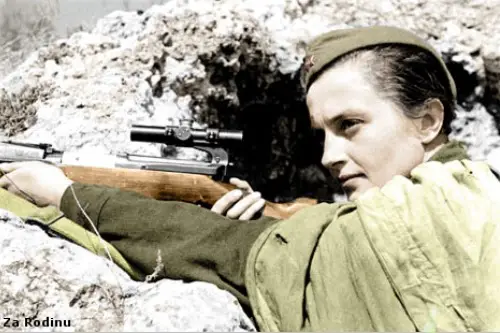When the world erupted into the chaos of World War II, countless men left their homes to fight on distant battlefields, leaving gaps in industries, communities, and families. It wasn’t long before women, who were largely expected to stay in the background, rose to meet the moment with courage and resilience. From factory floors to spy networks, women took on roles that not only supported the war effort but also reshaped society’s understanding of their capabilities.
Let’s take a journey into the remarkable lives of these women—workers, warriors, and pioneers—who changed the course of history, one act of bravery at a time.
The Factory Floors: Forging Strength in the Fires of Industry

Women across the world moved en masse into wartime industries, transforming themselves into skilled workers seemingly overnight. Rosie the Riveter symbolized this movement, but the women behind the image had real stories of grit and determination. Among them was Elinor Otto, often called the “Last Rosie the Riveter.”
Elinor started working in aviation factories in 1942 at the age of 21, building airplanes for the U.S. military. Her workday involved long hours of riveting, assembling parts, and troubleshooting technical challenges on aircraft like the B-17 Flying Fortress. Despite the exhausting physical labor, she thrived in the fast-paced environment, finding a sense of pride in her contribution to the war effort.
For women like Elinor, stepping into the workforce meant defying societal norms. Many faced skepticism from male supervisors and colleagues. Elinor later recalled, “We didn’t go there to change the world. We went there to work, to do what we had to do for the war.” But change the world they did—helping produce tens of thousands of planes, ships, and munitions that were critical to the Allied victory.
In the UK, women joined the Women’s Land Army to ensure the nation’s food supply didn’t collapse under the strain of war. Figures like Jessie Jordan, who worked in shipyards, and the countless anonymous women who labored in steel factories, shipbuilding yards, and munitions plants, became the backbone of their countries’ economies. Their work was grueling and often dangerous, but they pressed on, knowing their efforts mattered.
On the Frontlines: Women Who Fought the War Their Way

Beyond the factory floors, some women moved directly into the theaters of war, serving as soldiers, spies, and medics. One of the most fascinating figures of this era was Nancy Wake, a member of the French Resistance and one of the Gestapo’s most-wanted operatives.
Nancy’s journey started as a journalist, but she quickly turned to activism when she saw the atrocities of the Nazi regime. Fluent in French and possessing nerves of steel, Nancy became a master of espionage. She smuggled people out of France, gathered intelligence for the Allies, and trained resistance fighters in sabotage tactics. Known as the “White Mouse” for her ability to elude capture, Nancy parachuted into France to lead guerrilla campaigns against German forces, cementing her legacy as one of WWII’s most daring women.
Equally remarkable was Lyudmila Pavlichenko, a Soviet sniper who became one of the most lethal marksmen in history with 309 confirmed kills. At just 25 years old, she was feared by enemy troops and respected by her comrades. Nicknamed “Lady Death,” she fought during the Siege of Sevastopol and later toured the United States to rally support for the Soviet war effort, meeting figures like Eleanor Roosevelt.
Not all battles were fought with guns or sabotage. Noor Inayat Khan, a British-Indian spy, worked as a radio operator for the Special Operations Executive (SOE). She operated deep behind enemy lines in France, relaying critical intelligence to Allied forces. Despite being captured and tortured by the Gestapo, Noor refused to betray her comrades, ultimately sacrificing her life for the cause of freedom. Her posthumous George Cross award stands as a testament to her extraordinary bravery.
These women didn’t just fight in the shadows. In the Soviet Union, Marina Raskova, known as the “Soviet Amelia Earhart,” founded the Night Witches, an all-female regiment of bomber pilots who flew daring nocturnal raids in rudimentary planes. They became legends for their accuracy and fearlessness, and their enemies were left in awe—and terror—of their prowess.
A Legacy of Change: Rewriting the Rules

The contributions women made during WWII didn’t just help win the war—they helped change the world. When the dust settled, the return to “normalcy” wasn’t so simple. Women like Elinor Otto, who continued working in aviation well into her 90s, found it difficult to return to roles that undervalued their skills. After years of proving their worth in roles traditionally reserved for men, many women wanted more—more recognition, more opportunities, and more equality.
Yet the journey to gender equality was far from straightforward. Many women were pushed back into their pre-war roles, but the memories of their wartime contributions remained. Activists for women’s rights in the postwar decades often cited the undeniable proof of women’s capabilities during WWII to argue for workplace equality, fair pay, and broader opportunities.
Looking back, it’s clear the women of WWII weren’t just filling gaps—they were breaking barriers. They fought with tenacity and heart, both on the home front and the battlefield. Their stories remind us that extraordinary times demand extraordinary courage and that courage can come from anyone, regardless of gender.
Today, we honor these women not just as heroines of their time but as pioneers who laid the groundwork for the fight for gender equality that continues today. Their legacy endures in every workplace, battlefield, and leadership position where women continue to rise, just as they did during one of history’s darkest chapters.
